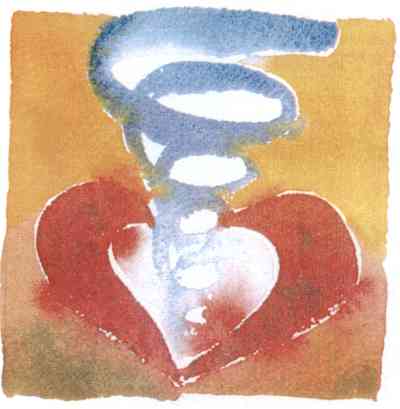

















Search Your Heart for Wisdom
The Often-Neglected, Essential Step in Memory
Divination
It is NOT sufficient to
simply have a memory. It needs to be processed. Here are the instructions:
After you have recalled a memory, see what lessons
your story holds. What truths does it contain? What did you learn from that
experience? What does this story teach you today?
When you’ve told the story of your memory, ask
yourself (aloud so your partner can hear, if you are doing it face to face,
or else on paper if you are writing your response), “What can I learn from
this story for myself? What does it have to teach me at this moment?” Do
your thinking aloud, or on paper, so your partner can follow along. Explore
the meaning the story has for you by talking, or writing it out.
In a caring way, search your heart for wisdom about
this memory. Look back on your past and how you’ve grown since then. As you
share your thoughts, it’s very natural and very much okay not to know where
you’re headed with the whole thing. It’s okay and very intuitive to be
talking and yet not to know what the particular point of it all might be.
Just say what is in your heart and mind in an extemporaneous way, sincerely,
spontaneously, keeping your awareness in the flow state and with the
attitude of, “I am searching my heart for wisdom to understand what I can
learn from this, listening to what my heart tells me in hopes that my
sincere offering will be useful to my partner.”
Because you care, you are willing to share the wisdom
that you discover from your story. And even you may be surprised at some of
the things you find in the story that you did not suspect were there when
you started.
The metaphoric parable hidden in the memory. It is
important to be able to see past the literal. Seeing only the literal is a
good way to get stuck in fundamentalism. Our attention is captured by the
literal, and we miss the hidden meaning in the “theme,” the symbology. It is
hard to get past the literal, but I’ve developed an exercise to help you
catch on.
Here are two memories, quite different at the literal
level, yet with very similar underlying themes. As you read them, see if you
can recognize the patterns common to both:
In memory one, someone was sitting at a red light at an
intersection, and then the light goes green. The person begins to
enter the intersection when, off to their right they see another car
crossing into the intersection at high speed. The person holds steady,
then enters the intersection when it is safe to do so.
In memory two, someone got up from watching TV to go into the
kitchen to make a cup of coffee. The person reaches into the
refrigerator for the cream, they are about to pour some into their coffee,
but they discover that the cream has soured! They find a fresh carton of
cream, pour it into the coffee, then return to the TV as their show resumes.
What is the common pattern in these two sample dreams? Try putting it into words. Each different formulation sheds a different light on the memory. Come up with more than one.
It is easier to see the common pattern than it is to describe that pattern in words. That is why it is important to explore various ways of describing in words the common patterns. The more varied the descriptions, the more likely to express something that will trigger an insight. Looking at two memories to find the common patterns helps us learn how to abstract and step away from the literal details and look at the underlying plot or drama.
Here are some examples: Someone narrowly avoids an unpleasant situation. Someone makes a correction quickly to avoid a problem. Something happens unexpectedly. The usual expectation about how thing will go is violated.
It is important to distinguish between DESCRIPTION and PRESCRIPTION when brainstorming these patterns. It is important to mindful of the type of pattern you are describing. Descriptive tells what happens. It describes a truth enacted in the memory. Prescriptive describes a truth implied in the action, in the events, a “moral to the story.” We want both. Descriptive statements are what we look for first.
Here is a statement of a common pattern, a statement that is purely descriptive of what happens: “Something unexpected counters the assumptions and anticipations of a person as they are about to initiate a habitual action.”
Here is a statement that is prescriptive, it spells
out a different kind of “truth,” an implication for action based upon what
happens: “It is important to be attentive, and be prepared to make a quick
adjustment to your habitual response in order to avoid something unpleasant
from happening.”
Spending time processing your memory for its meaning
for you is as important as the preparatory meditative process that we use to
insure our memory divination method is valid.
Don’t neglect to process your memory, and learn
something from it.
 |
 |
 |
 |
 |
 |
 |
 |
| HOME | EXAMPLE | PRACTICE | INSTRUCTIONS | RECORDINGS | PROCESSING | QUESTION | MEMBERSHIP |